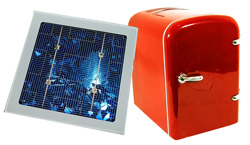 September 27, 2011
September 27, 2011
The Fukushima disaster cut Japan’s generating capacity. This immediately prompted ideas to cut the load on their grid. Many ideas are modern updates of a 200-year old one, a self-winding watch that powers itself at the point of use. For instance, inventors like Kohei Hayamizu are concocting systems to generate electricity from people walking in crowded urban areas.
In advanced economies, eliminating waste energy is an easy sale if it does not reduce convenience. For example, smart boxes to minimize power usage inside buildings are a small industry. However, tips on how to reduce phantom loads (power drawn by devices that are switched off, typically 5-8% of household current) nudge us to think more or to alter work habits. For example, over half of us fear powering down our computer and rebooting lest we lose something important. A solar powered washing machine irks users who think that 160F° water is necessary for clean clothes.
By contrast, people in have-not economies don’t miss what they never had, so low power ideas may improve their lives. These may eventually penetrate advanced (high-waste) economies that are pinched like Japan, or if technical improvements sneak up, like the PC sneaked up on mainframe computers. Many of these ideas have a low return on energy, but they do generate low-level power. Off-the-grid phone chargers are becoming as cheap as the phones. Bill Gates’ sanitary toilet for have-nots has become famous. Solar water pumps are a modern version of the old farm windmill. Solar powered refrigerators are coming along.
Such gizmos make a huge difference to the billions of people that cannot progress by the energy-wasteful ways of old industrial societies. An example of an advance that illustrates how Compression Thinking can affect all economies is the 1-penny paper health diagnostic test coming out from Diagnostics for All. These tests work anywhere and take little energy to produce and distribute. They could displace expensive labs and their supply chains – along with the jobs that go with them.
Not all these ideas will be successful, but somewhere among them are glimpses of how our future in Compression will take shape.
